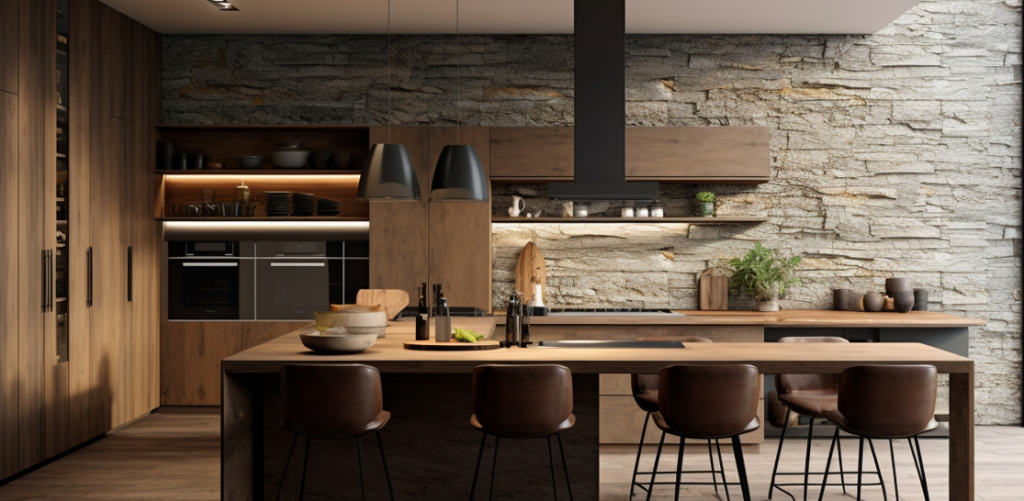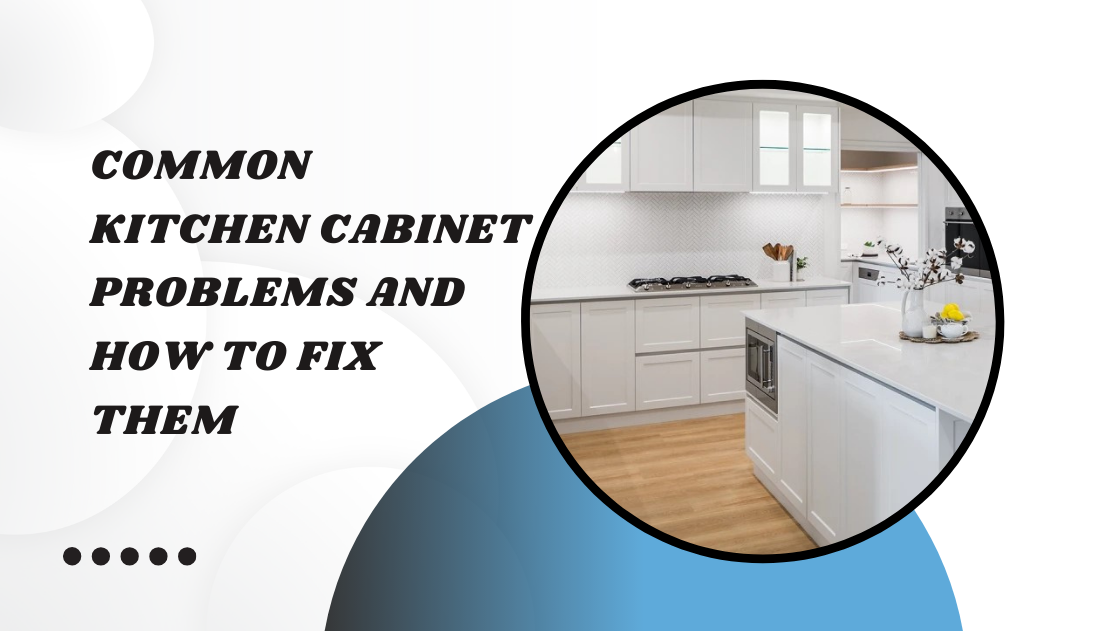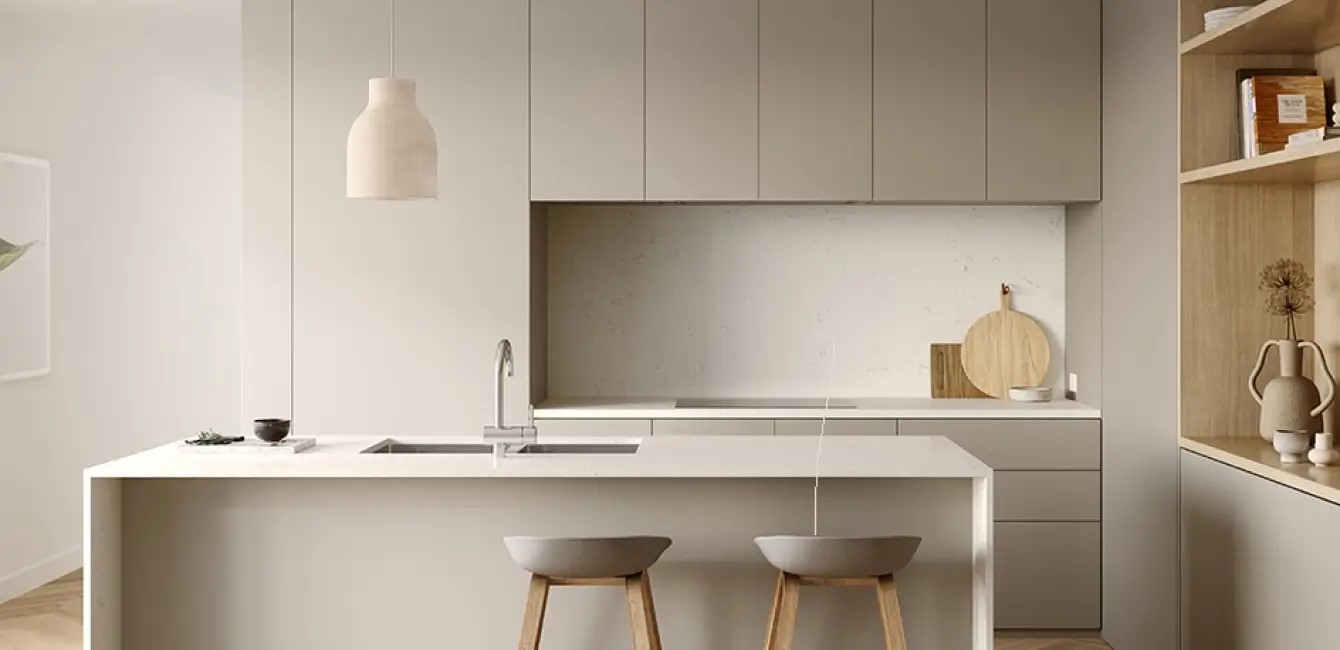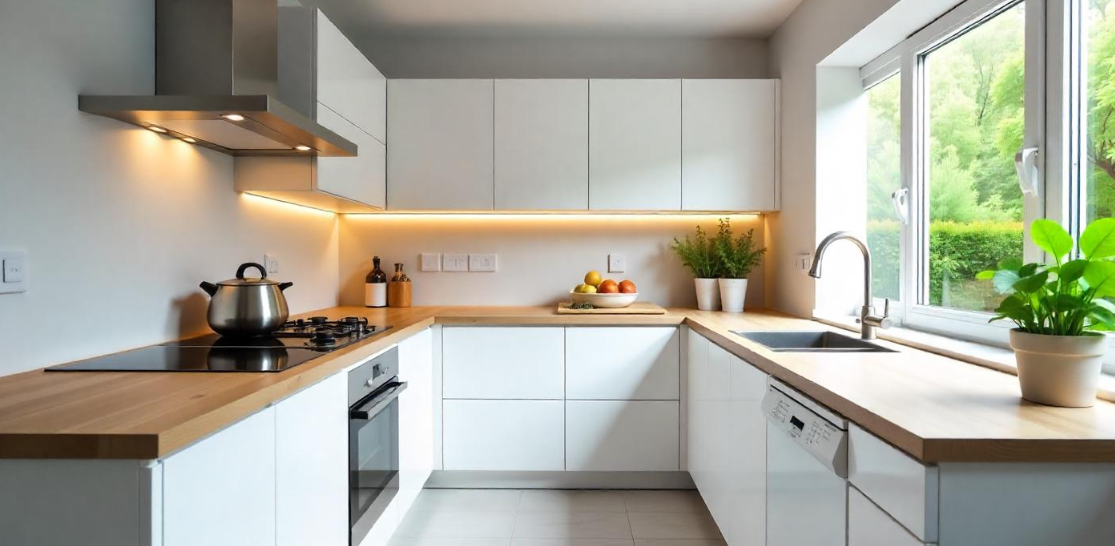Kitchen renovations in Melbourne often depend on selecting the right benchtop material. A stylish surface that stands up to daily wear and moisture, and fits your budget, will shape your home’s feel and resale value. Laminate and stone remain two of the most popular choices. Laminate offers versatility and lower cost, while stone benchtops in Melbourne deliver lasting durability and a premium look. We’ll explore their characteristics, cost considerations, installation requirements, and upkeep so you can confidently choose.

What Is Laminate?
Laminate benchtops comprise printed or solid-colour decorative layers bonded to a particleboard or medium-density fibreboard core. The top layer, made of toughened plastic resin, gives the pattern or finish. Pressure and heat compress these layers into a single sheet that installers cut on-site to match cabinetry layouts.
Advantages of Laminate
- Affordability: Entry-level laminate makes it suitable for tight budgets and large-scale fit-outs.
- Design Variety: From timber grains to concrete and marble imitations, it supports a broad palette for kitchen design in Melbourne.
- Lightweight & Easy to Fit: Less mass means simpler transport and installation, cutting labour time.
Limitations of Laminate
- Scratch and Heat Vulnerability: Cutting directly on the surface or resting a hot pot can leave permanent marks.
- Moisture Sensitivity: Edge damage or scratches can allow water to seep into the core, leading to swelling over time.
- Repair Difficulty: Deep gouges or chips require section replacement rather than spot repair.
Natural Stone Benchtops
Extracted materials such as granite, marble (including Carrara and Calacatta) and quartzite bring unique veining, depth and hard-wearing performance. Each slab is one-of-a-kind, so no two installations look alike.
Benefits of Natural Stone
- Exceptional Durability: Scratch and impact resistance suits busy family kitchens.
- Heat Resistance: Pans straight from the oven won’t scorch the surface, ideal for avid cooks.
- Resale Appeal: High-end buyers often seek properties featuring genuine stone finishes.
Drawbacks of Natural Stone
- Porosity: Regular sealing is needed to prevent staining from oils, wine or acids.
- Weight and Support: Additional structural reinforcement may add to installation costs.
- Higher Price Point: Premium varieties, excluding fabrication and sealing, can exceed the average cost.
Engineered Stone Options
Engineered stone, also known as quartz benchtops, blends quartz and other minerals with resin to produce a more rigid, non-porous surface. Its uniformity of colour and pattern makes it popular for consistent visual effects.
Strengths of Engineered Stone
- Stain-Proof & Non-Porous: No sealing needed, saving maintenance time.
- Colour Consistency: Matching islands and splashbacks is straightforward, enhancing cohesive kitchen design in Melbourne.
- High Hardness: Scratch and abrasion resistance rivals that of natural granite.
Considerations for Engineered Stone
- Heat Sensitivity: Sudden exposure to high temperatures can cause discolouration or hairline cracks.
- Environmental Impact: Engineered stone production demands significant energy and can generate resin-based by-products.
- Cost Considerations: Engineered stone generally falls into a mid-range category, reflecting the extra fabrication, polishing and finishing steps required.
Cost Factors
The final cost of a benchtop is influenced by the chosen material, the style and complexity of its edge profile, and the level of labour required for installation.
- Laminate surfaces are generally the most budget-friendly, thanks to lightweight sheets that are simple to fabricate and fit.
- Engineered stone involves more labour in cutting, polishing and finishing.
- Natural stone requires substantial support, precise templating and periodic sealing. Fabrication for each material can include specialist tools, skilled templating for sinks and cooktops, and careful sealing or edging.
Site conditions, cabinet configuration, access constraints and required substrate reinforcement also affect installation time and resource needs.
Installation Factors
Laminate
Installers typically connect the sheet directly to cabinetry with specialised adhesive. Seam locations must be planned where the joints are least visible. Brackets or support blocks under overhangs prevent sagging.
Stone
Fabricators templates your exact layout, including sink and cooktop cut-outs. A sturdy plywood substrate or steel brackets support the stone. After setting each slab, installers apply sealant to seams and around fixtures to prevent moisture ingress.
Quality installation influences longevity more than material choice. Hiring professionals experienced in kitchen renovations ensures precise alignment, secure fixing and correct sealing.
Maintenance Requirements
Laminate
Wipe spills promptly with mild detergent; avoid abrasive scouring pads. For stubborn marks, apply a baking-soda paste with a soft cloth. Never cut directly on the surface or rest a piercing hot cookware without a stand.
Stone
Daily cleaning with a pH neutral stone cleaner or warm soapy water protects the seal. Depending on the stone’s type and usage, the sealer should be reapplied every 12–24 months. Cutting boards and stands can also preserve polish and prevent micro-scratches.
Each care routine extends the lifespan of your benchtop. Stone surfaces generally demand more up-front attention, yet reward you with a surface that shows minimal wear over decades.
Choosing the Right Benchtop Surface
Budget, lifestyle and design vision guide your decision. If affordability and quick installation top your list, laminate delivers immediate results at a low cost. For those seeking a show-stopping focal point and future home value, stone benchtops in Melbourne hold strong appeal. Engineered stone carves out a middle path, offering impressive durability with easier upkeep than natural materials.
Reflect on cooking habits, family traffic and the maintenance schedule you can uphold. A clear sense of priorities will help you match the perfect benchtop material to your kitchen design in a renovation project, ensuring a space you’ll love and depend on for years.




